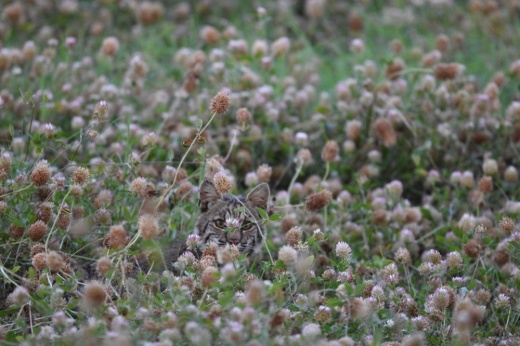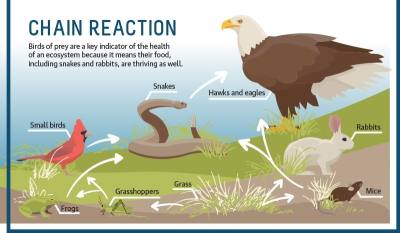When it comes online in spring 2023, Bois d’Arc Lake will create a new water supply source for the district and its 13 member cities, which include Frisco, McKinney, Plano, Richardson and parts of northeast Dallas County. Late last year it was estimated that the city of Frisco would use more than 12.9 billion gallons on water in 2022, an increase of about 33% over five years.
Although Collin County and its rapidly growing cities are the primary beneficiaries, the $1.6 billion reservoir is located northeast of the DFW Metroplex in Fannin County.
NTMWD officials said the reservoir is necessary to keep up with growing water demand. The district estimates the population in its service area of 2 million people in 2021 will double over the next 50 years and, in dry years, need an estimated 243 million more gallons of water per day by that time.
Fannin County Judge Randy Moore said besides infrastructure improvements surrounding the lake, his county has not yet benefited much from its development.
Reporting by the Texas Tribune in the years leading up to the lake’s approval and eventual construction showed that Fannin County property owners protested the loss of land and wildlife. One such protest came from a property owner who lost land that had been in their family since 1865.
“A big ‘Thank you,’ needs to go out to the landowners ... in that part of the world,” Moore said in an interview with Community Impact Newspaper. “The lake would not have happened if the landowners did not sell their property.”
However, the lake will offer economic opportunities to Fannin County, Moore noted late last year, adding that Fannin County would be the “recreation county for all of North Texas.”
To help restore the ecosystem around the lake, the water district collaborated with Resource Environmental Solutions, a national ecological restoration company. Together they were able to complete one of the largest environmental restoration projects of its kind in the U.S., according to a May 31 news release from the water district.
The release stated that more than 6.3 million trees had been planted in Fannin County over the course of four years. The goal of the project was to transform the land, formerly known as Riverby Ranch, from a cattle ranch to an ideal home for native wildlife. The 15,000-acre Riverby Ranch site is located northeast of Bois d’Arc Lake.
Now more than 8,500 acres of wetlands, 70 miles of streams and 3,200 acres of native grasslands have been restored, according to the release. Active planting and restoration efforts will end this year, and the team will transition to monitoring the site.
“What they did on that acreage is really incredible because they went in and restored native herbaceous plants,” Moore said. “It’s going to be pretty incredible what we will see in the near future as far as what that property will yield in wildlife.”
Planting with purpose
Before the Riverby Ranch area spent much of the last century as a cattle ranch, it was entirely forested, so the restoration team knew efforts had to begin with planting trees.
The project team planted native saplings, such as black willows, cottonwoods and sycamores. Live stakes, or sticks from these trees, were planted in lieu of seeds because they have a higher rate of germination, said Sam Kieschnick, an urban wildlife biologist at Texas Parks & Wildlife.
“If you plant a stick into the ground, it’s already past the first challenges that it could have,” Kieschnick said. “Willow trees are really, really easy to propagate by just putting sticks into the ground.”
Trees prevent erosion from polluting streams. This is especially important for the Bois d’Arc Lake project because of the surrounding watershed, which includes the Red River and Bois d’Arc Creek, the release said. Bodies of water that are downstream from agricultural areas, such as a ranch, are more susceptible to sediment pollution—manure, herbicides, pesticides and fertilizers—said Brandon Hall, a field ecologist at Resource Environmental Solutions.
“All that water then flows further downstream, and it ends up in the ocean eventually,” Hall said. “It has pretty dramatic consequences for the water quality itself. Streams aren’t supposed to carry as much nutrients and sediments as we see them doing now.”
Wildlife resurgence
In addition to protecting water sources, trees have another vital role: supporting wildlife.
“Every ecosystem starts with plants,” Kieschnick said. “You have to have a foundation of plants for all of the other critters, for all of the birds, all of the bugs [and] all of the mammals.”
When the restoration area served as a cattle ranch, there were drainage ditches on-site to prevent flooding. Hall said as soon as the team plugged the ditches, nature responded in a positive way.
“Walking through creeks in the spring, it’s everything you can do to not step on frogs,” Hall said. “The abundance of life out there is incredible. It doesn’t do justice to describe it with words.”
Birds of prey, such as hawks, owls and eagles, are what Hall calls “key indicators” of an ecosystem doing well. These animals are predators, so their presence means everything below them on the food chain is thriving. Bald eagles have already begun reproducing on the site, Hall said. Burrowing owls are also prevalent, which marks the farthest east inland sighting of the bird in the country, Hall said.
Ecologists use the presence of beavers and insect larvae to observe water quality, which is also doing well on-site, Hall said. He added that reptiles have come back in full swing.
To date, more than 700 species have been documented at the site, per data from Resource Environmental Solutions and Texas Parks & Wildlife.“Everything that you look at, if you just sort of think down the food chain as to how it’s living, everything can serve as a testament to the success,” Hall said.
A lasting impression
Scientists will continue to monitor how wildlife in the area respond to the restoration project.
One method of monitoring is called a “bio blitz,” which consists of a team of scientists and volunteers walking an area and noting the life, which include fungi and plants in addition to animals.
In a March 2021 bio blitz, about 100 species were documented, according to data from Resource Environmental Solutions and Texas Parks & Wildlife. Kieschnick said they plan to do more bio blitzes in the future.
Kieschnick works with ecosystems across the metroplex, spanning from Frisco to Benbrook to Midlothian. Similar restoration efforts are happening throughout DFW, but he said all of them are on a “much smaller scale” than the Bois d’Arc project.
One, called the Twelve Hills Nature Center, transformed a 20-acre apartment complex in Oak Cliff, Dallas, to native blackland prairie.
“It’s so cool that there are organizations [and] people that are willing to devote time and energy and resources into restoring these habitats,” Kieschnick said. “Wildlife benefits tremendously from our restoration activities.”
While many projects in North Texas required a team to complete, Kieschnick said that anyone can make a difference when it comes to supporting nature, even if it means planting one plant.
“[Plants] clean up the air, they clean up the water, they provide habitat, they provide food, they provide all of this stuff for us,” Kieschnick said. “It’s a good thing for everybody if we start appreciating plants.”
Additional reporting by William C. Wadsack







